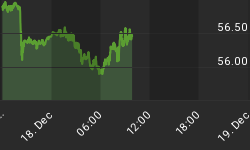The retail sales data for June and for the second quarter as a whole indicate that the U.S. consumer spending binge is winding down. One factor that may finally be curbing additional consumer spending is the rising household debt-service burden - i.e., required principal and interest payments as a percent of disposable (after-tax) income. The chart below shows that the household debt-service burden hit a new record high of 13.93% in Q1:2006. We suppose it is no wonder that the debt-service burden is on the rise given the behavior of the other variable plotted in the chart - household credit market borrowing as a percent of disposable personal income. This ratio has been trending higher since 2000, the beginning of the housing boom. Low financing rates mitigated the debt-service burden for a while even as household borrowing exploded. But with the Fed having raised the funds rate by 425 basis points in a 25-month span - the largest 25-month funds rate increase since the Volcker era - the combination of rapid borrowing and rising financing rates is pushing up the debt-service burden at a faster rate. With employment growth slowing, which will retard growth in disposable personal income, and a massive amount of mortgage debt subject to interest rate resets this year and next, the household debt-service ratio is destined to reach even higher levels as we go forward. In turn, this will be a significant headwind to consumer spending. But don't worry. I'm sure corporations will be stepping up their capital spending as their customers are slashing their spending. At least, that's the conventional wisdom.
















